October 4, 1957, the first man-made Earth satellite sends a steady beeping signal on radio for everyone to hear. While its creator Sergei Korolev, his team and the whole Soviet Union celebrate this success, the people of the western world are stunned and terrified. With the technology to deliver satellites into space, the Soviet Union had an advantage over the United States. Although it looked like they had won, the race was not over yet. This battle of technology soon became a battle of ideology and a fight for prestige. Nonetheless without the Space Race, many technologies would not have been developed. First article of the series where we take a look back at the famed ‘Space Race’.
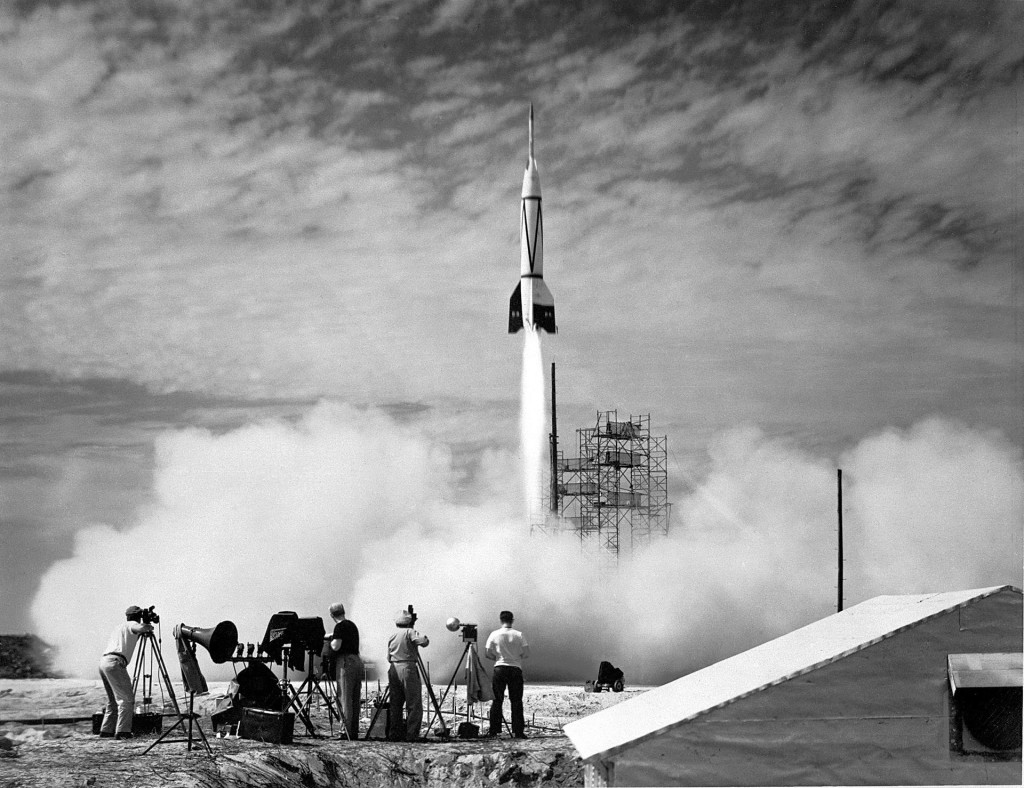
ROCKETS?
Rocket technology is older than one would think. Already around 300B.C, Chinese used gunpowder, stuffed in bamboo tubes, sealed at one end as fireworks. Whereas this was firstly used for rituals, it soon became a part of their military strategies. The Mongols brought this technology to the West. The first documentations in Europe about rockets are dated to around 1250 A.D., and the European armies used small ballistic rockets to augment their artillery from that point onwards. The technology, however, was underestimated until World War II.
At the beginning of the 20th century, scientists started to look at rocket technology and its potentials. Inspired by the first science fiction books like “From the Earth to the Moon” by Jules Verne or “In the Days of the Comet” by H. G. Wells, the dreamers amongst the scientists began to wonder if space travel was an actual possibility. The pioneers in the field were Konstantin Tsiolkovsky and Robert H. Goddard. Tsiolkovsky, who was a teacher of mathematics, published his paper “The Exploration of Cosmic Space by Means of Reaction Devices” in 1903 and became famous within the Soviet Union. He described the physical laws that govern a rocket’s motion. In his honor, the equation that describes the velocity change acquired by a rocket was named the “Tsiolkovsky Equation”. Robert H. Goddard on the other hand took an engineering approach to rockets and became famous for his three improvements to rockets. He significantly improved the rocket’s performance by introducing a combustion chamber, an exhaust nozzle and the arrangement of the rocket into stages. Both men concluded that a rocket propelled by liquids would have a great amount of power and potentially enough to go to space.
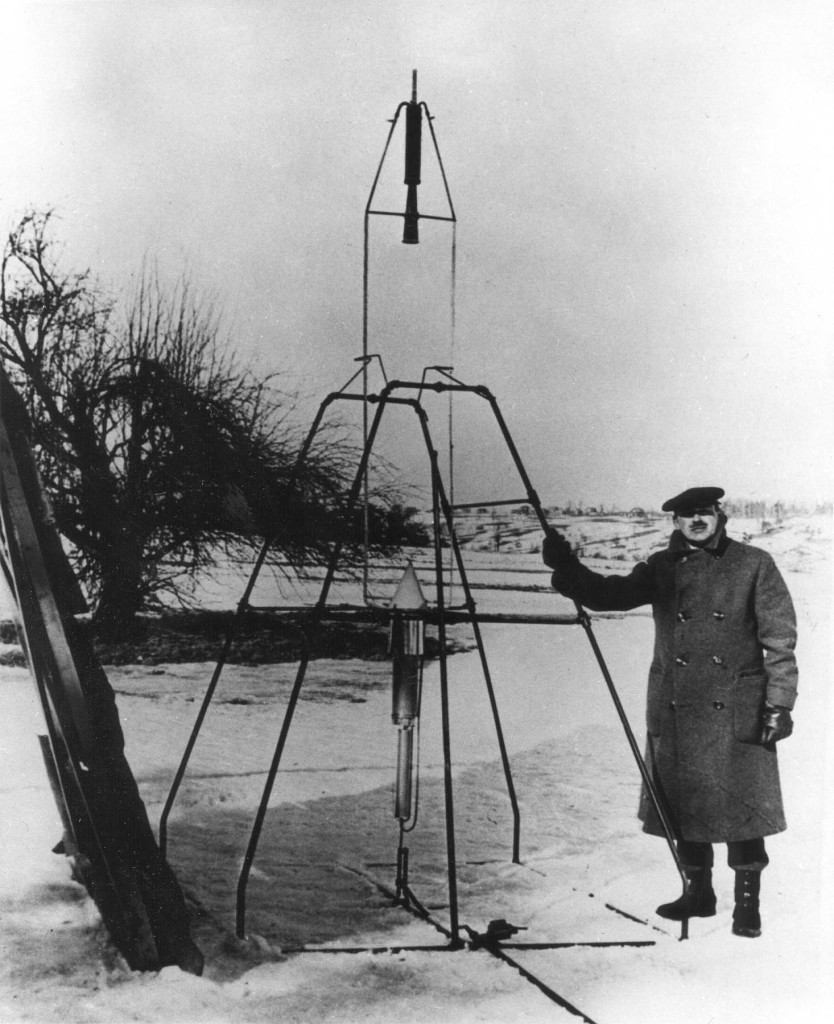
WERNHER VON BRAUN
When in 1923 Hermann Oberth published his book “By Rocket into Planetary Space”, he inspired many fellow Germans to do research in rocketry with the dream of space flight. Thus followed the foundation of many rocketry clubs in Germany, one of which was “Verein für Raumschiffahrt” (Society of Spaceship Travel), and it was soon joined by a young Mechanical Engineering student, Wernher von Braun. Von Braun was ever since fascinated by rockets and after reading Oberth’s book, the dream of going to space did not leave him. After his graduation in 1932, he dedicated his time to developing new rockets and he soon managed to convince the military of his capabilities and became the director of the German military rocket program. Under the Nazi regime and throughout the war, he continued his work on rockets. Therefore, he moved to Peenemünde, a city at the coast of the German Baltic Sea. This period of his life remains controversial to this day, as it is unclear to what extent he was supporting the Nazi regime. During the war, he produced his most famous rocket, the V-2. Von Braun claimed that his research was only concerned with space travel. Therefore, after hearing about the V-2 strikes on London, he said, “the rocket flew perfectly, except for landing on the wrong planet”.
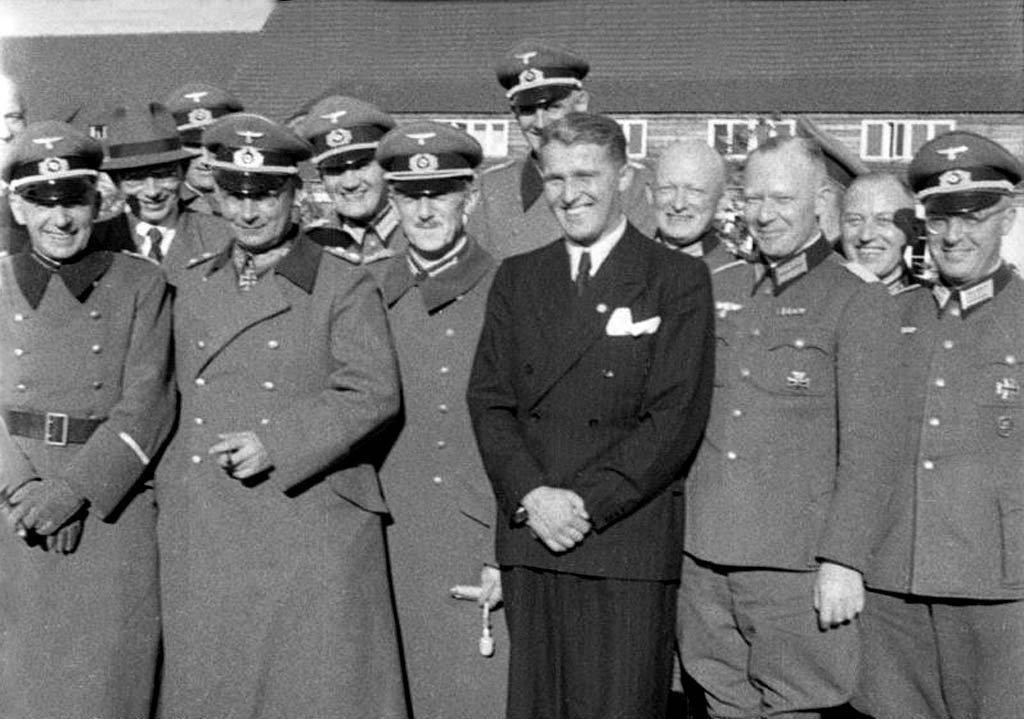
When WWII ended, von Braun and his team had to decide what to do. Both USSR and U.S. authorities had taken an interest in German know-how and technology. Von Braun, together with his team, decided that their knowledge would be best used across the Atlantic. Since they were afraid of being forced to work in the Soviet Union and their workplace was close to the Russian front, von Braun took his whole personnel and equipment south to Austria, where he surrendered to the U.S. army. Shortly after him, his team from Peenemünde and his equipment were shipped to the United States.
SERGEI KOROLEV
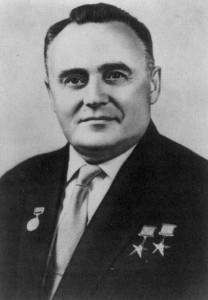
At the same time, the Red Army were trying to find the Germans who were responsible for the V-2.Impressed by German technology, the Soviets decided to take whatever they could and incorporate it into their own technology. Sergei Korolev was one of the many experts assigned for this task.
Korolev, born in 1907 in Ukraine, and who was originally an aircraft designer, took an interest in rocketry in the 1930s. He had previously made a name for himself amongst space enthusiasts in Russia, with his publications and the co-foundation of a rocketry organization called GIRD. The group lasted for two years until the military saw its potential and merged it with their Gas Dynamics Laboratory. Korolev was assigned deputy chief of the institute and from then on dedicated his research to rocket technology. In 1937, during the Great Purge, Korolev was denounced for dislocating funds and thus sentenced to imprisonment in a Gulag camp. He was sent to eastern Siberia to work in a gold mine. A change in leadership in the secret police got Korolev out of the Gulag just a year later. He was moved to a “sharshka”, a slave-labor camp for intellectuals, where he worked on engineering projects, assigned by the communist leadership. After working on two bomber airplanes, Korolev was moved to a sharshka under Valentin Glushko, where he worked on a rocket assisted booster for aircraft. His imprisonment was a primary reason why the Russian rocket technology fell behind the German’s, which was now in American hands.
A government decree discharged Korolev and many other scientists in 1944. As a decoration for his work, Korolev was awarded the badge of honor in 1945. Shortly after, he was commissioned into the Red Army and ordered to go to Germany and recover German rocket technology.
Korolev and the Red Army were not able to find any scientists responsible for the V-2s. In a great effort to find them, the Red Army hung wanted posters, drove through cities and villages with megaphones and questioned surviving workers. They did not know about von Braun’s surrender to the U.S. In the end, they retrieved some 150 German scientists and pieces of the V-2 project and brought them back to Russia.
THE WEST

The end of WWII marked the beginning of the Cold War; a war fought with propaganda and espionage, rather than soldiers. The Cold War was a battle of ideologies and technologies. It was the USA against the USSR, East against West, and somewhere in between those worlds, von Braun was pitted against Korolev.
Both Superpowers developed the nuclear bomb and concluded that the optimum carrier system for its delivery was a rocket. In case of an attack, a rocket or a missile would be the perfect means of a counter attack. Neither the White House nor the Kremlin were interested in going to the Moon or sending anything into orbit. After WWII ended in 1945, this remained the great dream that von Braun and Korolev shared. Individually both nations developed their rocket technology further. However, with von Braun and his team, the United States had a technological advantage over the Soviet Union.
Upon arriving in the United States, the scientists were further interrogated and later moved to Fort Bliss, an army installation north of El Paso, Texas. These scientists were so valuable to the U.S., that they cleared out the history of their involvement with the Nazi party in Germany and kept their existence within the U.S. a secret to the public for some time. With their new fake documents and fake history, the scientists were ready to get back to their work. Nonetheless, they were not allowed to do so. In Fort Bliss, they were kept under constant surveillance and apart from demonstrating some V-2s and teaching Americans about rocketry, the Germans were more or less doomed to do nothing. Von Braun sent out many appeals to continue his work and all were denied until the Cold War became hot for the first time.
When the Korean War broke out, the need for missiles surged once more. In the military, it was clear that the best way to satisfy this need was to use the Germans. The instructions from Washington said to ‘please build a rocket like your V-2, just bigger and better’. Thereafter the team was moved to Huntsville, Alabama, to the Redstone Arsenal of the U.S. Army. With new funding for his projects, von Braun was able to develop the Redstone rocket in 1953. The rocket was a short-range nuclear missile, the first of its kind.
Von Braun used this military base for his dreams of civilian space flight. He published magazines and illustration books about the possibilities of spaceflight and involved the larger public with his dreams. He even played with the idea of a retaliation weapon in space, which would take the form of an armed space station and in the event of a Soviet attack it would launch a nuclear missile. Another space enthusiast, Walt Disney, jumped the gun on promoting spaceflight. Together with von Braun, he paved the way for the U.S. public to fantasize about a flight to outer space.
As the director of the Development Operation Division of the Army branch, which was in charge of the rockets, von Braun modified a Redstone to a sounding rocket and created the Jupiter-C; the first rocket to have the capabilities to bring a satellite to space. This was proven in a flight test, which was surveyed by the army, so von Braun and his team would not accidentally launch into space. In 1954, the U.S. government agreed that a research satellite would be sent to space in the International Geophysical Year, 1957. In Washington, however, von Braun remained a controversial character. Many believed that the first satellite should be an American achievement, without German help. Thus, the Navy was granted the first go for a satellite launch. Their system, however, relied on too many new technologies, whereas von Braun’s philosophy was to test, test and test again before even considering a launch.
Then – the shock; a steady beeping sound on radio, for everyone to hear. It was the Russian Sputnik sending its signals as it was in orbit around Earth.
THE EAST
In 1947, the first R-1 rocket was tested. After two years of gathering information and reconstructing V-2 blueprints, the R-1 was built. It was in fact a Russian made V-2 missile with only few modifications. In total eleven tests were made with the R-1 which proved to be as imprecise as the V-2. With such poor precision and short range, the pressure increased on Korolev, who had been assigned Chief Designer of long-range missiles. He soon decided that rebuilding German technology would lead them nowhere without von Braun himself. Therefore, the German rocketry group in Russia was soon dissolved and sent back to Germany. Nonetheless, the Russians learned some valuable lessons from the tests.
Korolev began working on an R-2 rocket in 1947. Besides being a revolutionary designer, he was also a good manager and had a talent in organizing and planning. This made his career advance rapidly and soon he became so important to the Russian rocket program and the USSR Military that his very identity was kept a state secret. Many people working for him did not even know his name from then on; they simply called him ‘Comrade Chief Designer’.
With the R-2 missile, Korolev was able to double the range and precision of the V-2. The next development, the R-3 topped that range again, however due to engine problems the program was shut down in 1952. This was followed by a short-range missile, the R-5. Already then, Korolev was dreaming of larger carrier systems and so was the Kremlin. In 1952, he was assigned the task to build an intercontinental ballistic missile with the capabilities of delivering a 5-ton warhead to the United States. This seemed ludicrous to many rocket engineers back then, mainly because of the required thruster size. Korolev, however, took the job and said it could be done. For him this rocket was the ticket to space, indeed the R-7 certainly had the payload capabilities to do so. Yet the thrust required for this rocket remained a problem. Korolev had an idea – he approached Glushko, a specialist in rocket engine design and suggested clustered thrusters and a multi-stage rocket. Glushko agreed after some arguing under the condition that the engines were his department only.
Already in 1953, the first ground tests were carried out. The revolutionary design posed many problems and the test failures put a lot of pressure on Korolev. Besides from having clustered engines and several stages, the rocket was the first rocket ever to use thrust vectoring as means of stabilization. Already while testing the rocket, Korolev tried to persuade his military officials to use to rocket to launch a satellite. However, the military was only interested in sending warheads to the United States. A visit by Nikita Khrushchev marked a positive change – while showing him a mockup of the R-7, Korolev took a bold approach and showed the leader of the USSR his ideas for a satellite and managed to convince Khrushchev to investigate spaceflight further.
August 7, 1957 was the date that Korolev had waited for so long, the first successful test of his R-7 rocket. Now they had to prepare a second launch and replace the dummy warhead of the test with the satellite.
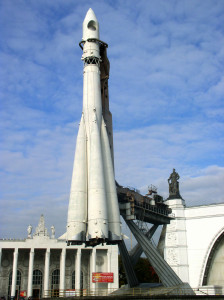
The original idea was to send a satellite with scientific experiments and cameras to space. The satellite was called Object-D. Object-D had to undergo a major makeover because it turned out to be too heavy and too large for a launch. The Russian scientists stripped it to its bones until only a sphere with a radio transmitter and four antennas was left. This sphere was named the Sputnik-1.
On October 4, 1957, the satellite was launched from Baikonur Cosmodrome. After lifting off perfectly and ascending to space, the team had to wait 90 long minutes to hear the signal that Sputnik sent from space. The signal did come 90 minutes later, as expected. The first man made Earth satellite had successfully been sent to space!
SPUTNIK SHOCK
When the first people heard the signal in America, they could not figure out what it was. It worried them, with all their technology they could not understand how this signal is coming from space. It did take them a while, but finally they figured out it was being emitted by a Russian satellite. The Ideological enemy of the Cold War had apparently beaten them in technology. For von Braun, the news was an absolute shock. With his rocket, he would have been able to beat the Russians by a year but the Americans did not allow him. Then he was ordered by Congress to testify on the technological gap between the Russians and the Americans. He made it clear that he was blocked from using his full potential as an engineer.
The U.S. was under pressure to launch a satellite too. In a rushed attempt to close the technological gap, the U.S. Navy prepared one of their untested Vanguard rockets with a satellite on top. What should have been a media spectacle turned into a shaming disaster. The rocket lifted off one meter from the pad only to crash back on the ground and blow up in a ball of fire. Even though von Braun was sorry for the scientists, he was also happy to have a chance to finally launch a satellite. Within 60 days von Braun was supposed to launch.
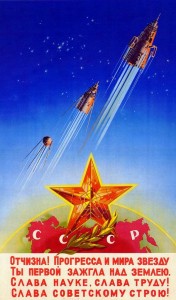
Then came another shocking news from Russia. Only four weeks after Sputnik-1, the Russians have sent a living dog, Laika, to space. To celebrate the anniversary of the October revolution on November 4, 1957 the Soviet Union announced this worldwide. Now the Americans began to worry. If the Russians could do that, they could easily shoot a hydrogen bomb on American soil. All eyes were on von Braun now.
On January 31, 1958, 22:48 ET a Juno rocket took off with the satellite Explorer-1. The United States were back in the Space Race.
[author] Victor Gutgesell, Editor Leonardo Times [/author]
